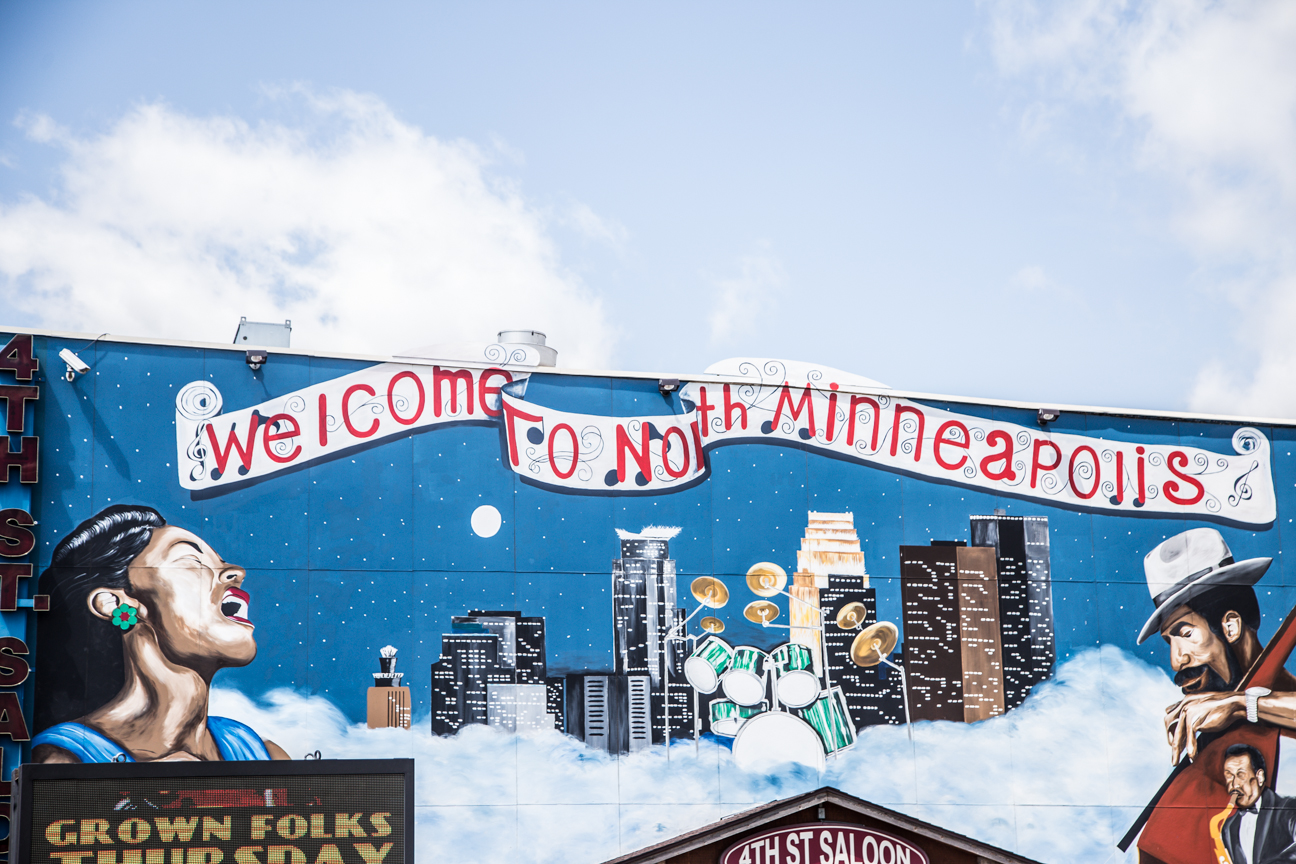
It’s hard to weave your way through Northside neighborhoods and fail to notice how things are simultaneously changing and staying the same. New buildings are cropping up here and there along major Northside arteries, occupied by small businesses and flanked by newly installed bike paths. At a surface level, one might think these are positive signs for a community that has shouldered the weight of racialized capitalism over several generations. What’s wrong with activating space and investing in fuelless modes of transportation? Don’t people want to have shiny new buildings and expanded amenities?
Well, the answer is complex. And to unravel some of this complexity, we may want to probe a little deeper. Who decided that this new building should be developed? Who is it for? Who will own it? What business gets to take root there? What kinds of government subsidies helped make the project happen? We quickly find out that these changes are often set in motion by people who have little to no connection to the everyday life of that particular block. It begs the question, if individuals don’t understand the culture, the joy, the struggle, the life of the place and its people, how can they care about it enough to preserve it, protect it and enhance it? But that’s assuming that this is the goal. What communities that have been labeled “disposable” know all too well is that their neighborhood has a big money sign on it. Even if the timeline of when that money will materialize isn’t all that clear, what folks know is that the majority of those living there now will get cut out of the deal.
So, no, it’s not as simple as boiling it down to whether or not folks want to grow businesses, contribute to enhancing access to amenities and be surrounded by beautiful streetscapes. Who wouldn’t? But, the inevitable question is always lurking under the surface: “At what cost?”
These are discussions many Northside business owners, neighborhood associations, activists and residents are having. In fact, this conversation can often feel so circular, one that’s been had for generations, that it feels like things aren’t actually changing at all. Yet, generation after generation, there are people actively working to shift systems, policies and practices that center the voices and aspirations of those who have been, and continue to be, excluded. An emerging partnership between Main Street Alliance Minnesota (MSA) and West Broadway Business and Area Coalition (WBC) aims to harness that energy through a strong coalition of Northside business owners.
Those who know these two organizations might be surprised by this partnership–after all, MSA is a national organization with a Minnesota chapter whose membership is state-wide. WBC, on the other hand, is hyperlocal, focused primarily on the West Broadway commercial corridor of the Northside. However, what binds them together far outweighs their differing geographies. In fact, a conversation with the two executive directors, Felicia Perry (WBC) and Corinne Horowitz (MSA) will quickly unveil common values and goals fueling their respective work. In describing the organization, Perry says:
“WBC’s mission is to build the capacity of businesses and entrepreneurs of North Minneapolis. Both of our organizations value small business as a vital part of shaping our economic ecosystem and generating sustainable wealth. We both center those values in our work. Organizing and advocacy for small business has been missing on the West Broadway corridor and therefore our voices have been absent within the walls of City Hall.”

Felicia Perry, West Broadway Business and Area Coalition Executive Director speaking at a MainStreet Alliance press conference hosted at Sammy’s Avenue Eatery NE.
WBC is well positioned to take the lead to advocate with and on behalf of Northside businesses and this is exactly the strength that Main Street Alliance can bring to the partnership. “MSA gives small business owners the tools to make sure they are heard when our elected officials are making decisions that will impact business owners’ livelihoods” Horowitz asserts, adding that “North Side business owners are pillars of their community and must get the attention they deserve in Minneapolis.”
It’s clear that at their core, Perry and Horowitz believe small business owners are major actors and contributors to shaping the identity of a block, a corridor, a neighborhood and a city. I mean think about it: I say Eat Street and within seconds your mouth starts salivating, your belly starts grumbling and you are thinking of 3-5 restaurants situated along Nicollet Avenue. It won’t be long before you are recalling a concert at the Ice House and that one time you danced the night away at Pimentos Jamaican Kitchen on your birthday. You get the point. We attach meaning to places based on what draws us there, keeps us there and helps us build meaningful memories.
If businesses are so central to the vibrancy of a place, why then do Northside businesses, especially owned by black and brown people, seem to be such a neglected constituency when it comes to influencing decisions that directly affect them? This is the frustration and challenge both organizations want to address head on. When describing some of the dynamics at play, Horowitz shares that “Governments work with business owners to grow their local economies, but public sector leaders only hear from people who are invited into the conversation.” WBC and MSA are determined to ensure that Northside business owners are invited to the conversation, at minimum, and ideally are setting the agenda centering their own lived experience.
Both Perry and Horowitz have had too many conversations to count with entrepreneurs and business owners, especially black, indigenous and people of color (BIPOC), who feel programs designed to help them remain largely inaccessible.
KB Brown, Northside business owner and board member of both organizations, has lots to say about this. Brown owns WolfPack Promotionals, a promotional printing company, located across the street from the Capri Theater on West Broadway. Beyond running his business, he has always prioritized being an advocate for small business, Northside businesses in particular. In fact, he made the connection between the two organizations, seeing the potential this partnership could have to build needed advocacy infrastructure on the Northside. When asked about the partnership and the broader value of this work, Brown shares:
“This partnership means that we will finally have pathways to shine a positive light on the Northside business community… it will ensure that business services that have already been allocated at the city level will actually benefit businesses in my community.”
Brown goes on to share how beneficial programs like B-TAP, managed by the City of Minneapolis, can be. He was able to use B-TAP funds to support business accounting services. His desire is to make sure other BIPOC businesses also have awareness and access to these funds, as well as tools to advocate for change if the purpose of these programs is not being achieved.

Sammy McDowell, owner of Sammy’s Avenue Eatery.
Sammy McDowell is also actively engaged in this conversation. Sammy owns Sammy’s Avenue Eatery, which has now expanded to two locations, one on the corner of West Broadway and Emerson and the other in Northeast Minneapolis. In a video, originally recorded to share as public comment during a Minneapolis City Council meeting, Sammy describes little to no support from city programs designed to help small businesses like his. Not only did he not use city resources, he is constantly sought out to mentor and guide aspiring business owners. Sammy is glad to be able to help others even as it consumes his already limited time and resources. His question is, “Can there be a way to financially support business owners who provide this level of support and technical assistance to others coming up behind us?”
These two examples shed some light on just a sliver of the obstacles small businesses face–they don’t even touch on the challenge of accessing traditional bank loans based on “creditworthiness,” or access to affordable commercial space. Instead of having these conversations in an echo chamber and in meetings after the meeting (as they usually do) Perry, Brown and Horowitz think it’s time to get organized. Their goals over the next few years are to build a solid coalition of business owners, build a platform for voicing opinions, feedback and, most of all, solutions to some of the challenges, to then package them into a collective agenda. They will then have the tools to advance this agenda at all levels of change.
What motivates the Foundation to get behind this work is the potential for businesses all over the Northside to mobilize around key issues and developments, so that change isn’t happening to the Northside, but with, by and for the Northside. At this point, anyone working and living in North Minneapolis can feel the winds of change blowing. Northside business owners, youth, artists, activists, mothers, fathers, grandmas should be the ones to determine what that change looks like and how they will benefit socially, economically and culturally.
It’s past time to make investments that change the things we thought would always stay the same and to hold the line on the assets that make North Minneapolis the Northside.
